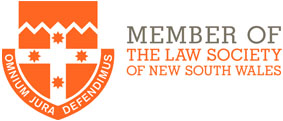Bankruptcy is a legal process where you’re declared unable to pay your debts and released from most debts (but not child support, court imposed fines, HECS and HELP debts etc) so you can make a fresh start financially.
You can either enter into bankruptcy:
- voluntarily; or
- on petition to Court by a creditor after not complying with a Bankruptcy Notice.
An order declaring someone as a “bankrupt” is known as a sequestration order.
Bankruptcy normally lasts for 3 years (and one day) provided you comply with your obligations. If you don’t, it can be extended several years.
Once a bankrupt, your Trustee has ownership and control over your assets (with exceptions such as some household items, a car up to a certain value, tools to earn an income, superannuation etc).
The trustee can be the Official Trustee (from the Australian Financial Security Agency, AFSA) or a registered (private) trustee. The trustee is either appointed by the Court or in the case of voluntary bankruptcy, by AFSA or you can nominate one of your choice.
When you are bankrupt:
- you must provide details of your debts, income and assets to your trustee
- your trustee notifies your creditors that you’re bankrupt – this prevents most creditors from contacting you about your debt
- your trustee can sell certain assets to help pay your debts
- it can affect your ability to be a company director
- you may need to make compulsory payments if your income exceeds a set amount (currently around $64,000)
Bankruptcy may have a serious impact on you. It may affect your ability to get credit, travel overseas or gain some types of employment so you should get some advice before voluntarily bankrupting yourself. The National Debt Helpline provides free support on 1800 007 007.
Bankruptcy is just one formal option available under the Bankruptcy Act to manage your debt. Other formal options include temporary debt protection for 21 days reprieve from creditors enforcing a judgment against you, a debt agreement or a personal insolvency agreement (both being arrangements to settle debts without becoming bankrupt).
FURTHER INFORMATION
For further information, please contact McKillop Legal on (02) 9521 2455 or email help@mckilloplegal.com.au
This information is general only and is not a substitute for proper legal advice. Please contact McKillop Legal to discuss your needs.










